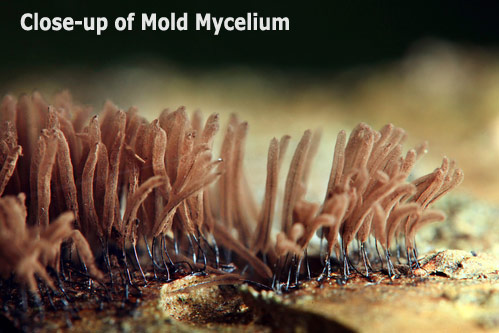What is the Life Cycle for Mold?
Mold is more than simply a smelly and unsightly stain on walls, ceilings and other surfaces. Like all forms of fungus, mold is a living organism that can grow and reproduce. A look at the mold life cycle will help you understand how it can quickly spread through your home before you even realize it's there.
Four stages of the mold life cycle
• The initial stage begins with a cell called a hypha. This minute, thread-like cell feeds on cellulose, wood and other organic materials through the release of enzymes. As the hypha absorbs the nutrients, it grows into a mycelium, and the resulting cluster of hyphae forms the visible portion of mold.
 • Once the mycelium is created, some of the individual hyphae develop spores on the ends. You may remember from high school biology that spores are cells that reproduce asexually in fungi and certain plants such as ferns. Available light, oxygen and ambient temperature all play roles in the formation of spores.
• Once the mycelium is created, some of the individual hyphae develop spores on the ends. You may remember from high school biology that spores are cells that reproduce asexually in fungi and certain plants such as ferns. Available light, oxygen and ambient temperature all play roles in the formation of spores.
• The microscopic spores are then released into the air, where they drift until settling in a new area with the requisite water and nutrients to fuel reproduction. Despite their size and seemingly delicate nature, spores are hardy organisms. In many cases they can remain dormant for years, even under inhospitable hot and dry conditions.
• As spores settle in and begin reproducing, the mold life cycle comes full circle. The spores absorb moisture and nutrients from their new home and begin generating new hyphae. Left unchecked, the process continues indefinitely.
How the mold life cycle affects mold treatment
Hyphae act as roots, anchoring mold to its substrate and absorbing nutrients just as roots do for plant life. Wiping down a surface infested with mold does nothing to disturb the hyphae. While mold may initially appear to be gone, it inevitably returns as the remaining hyphae begin a fresh mold lifecycle.
In many cases, the mold life cycle plays an important part in the balance of nature, such as when it feeds upon dead or decaying trees, leaves and other organic debris. Problems arise indoors, where ingesting spores through your respiratory system can cause allergic reactions and other health problems.
How can you break the mold life cycle?
With traditional mold remediation, costly and inconvenient physical removal of affected surfaces is the only way to interrupt the mold life cycle. Cleansing an area with bleach does not rid a surface or surrounding areas of the floating mold spores. The best treatment to break the mold life cycle will be one where the surfaces in the environment are treated to keep mold spores from repopulating an area and to remove excess humidity in the air which provides an additional element needed for mold hyphae reproduction.